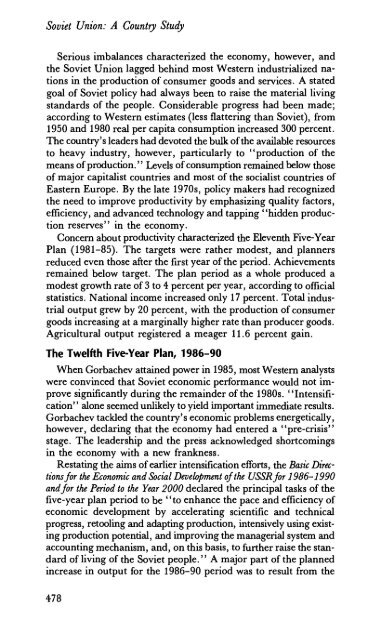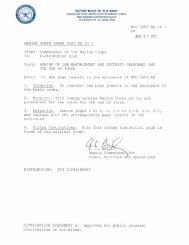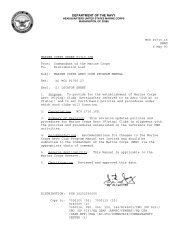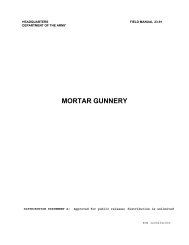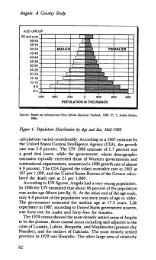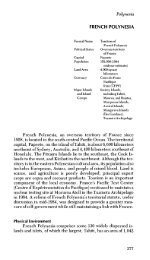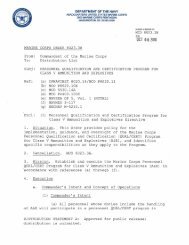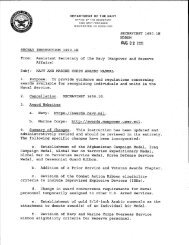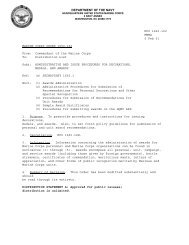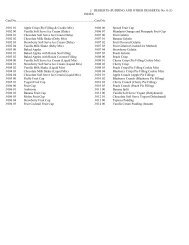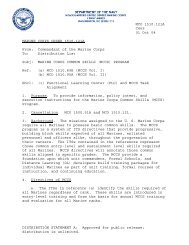Soviet Union Study_7.pdf
Soviet Union Study_7.pdf
Soviet Union Study_7.pdf
Create successful ePaper yourself
Turn your PDF publications into a flip-book with our unique Google optimized e-Paper software.
<strong>Soviet</strong> <strong>Union</strong>: A Country <strong>Study</strong><br />
Serious imbalances characterized the economy, however, and<br />
the <strong>Soviet</strong> <strong>Union</strong> lagged behind most Western industrialized nations<br />
in the production of consumer goods and services. A stated<br />
goal of <strong>Soviet</strong> policy had always been to raise the material living<br />
standards of the people. Considerable progress had been made;<br />
according to Western estimates (less flattering than <strong>Soviet</strong>), from<br />
1950 and 1980 real per capita consumption increased 300 percent.<br />
The country's leaders had devoted the bulk ofthe available resources<br />
to heavy industry, however, particularly to "production of the<br />
means ofproduction. " Levels ofconsumption remained below those<br />
of major capitalist countries and most of the socialist countries of<br />
Eastern Europe. By the late 1970s, policy makers had recognized<br />
the need to improve productivity by emphasizing quality factors,<br />
efficiency, and advanced technology and tapping''hidden production<br />
reserves" in the economy.<br />
Concern about productivity characterized the Eleventh Five-Year<br />
Plan (1981-85). The targets were rather modest, and planners<br />
reduced even those after the first year ofthe period. Achievements<br />
remained below target. The plan period as a whole produced a<br />
modest growth rate of 3 to 4 percent per year, according to official<br />
statistics. National income increased only 17 percent. Total industrial<br />
output grew by 20 percent, with the production of consumer<br />
goods increasing at a marginally higher rate than producer goods.<br />
Agricultural output registered a meager 11.6 percent gain.<br />
The Twelfth Five-Year Plan, 1986-90<br />
When Gorbachev attained power in 1985, most Western analysts<br />
were convinced that <strong>Soviet</strong> economic performance would not improve<br />
significantly during the remainder of the 1980s. "Intensification"<br />
alone seemed unlikely to yield important immediate results.<br />
Gorbachev tackled the country's economic problems energetically,<br />
however, declaring that the economy had entered a "pre-crisis"<br />
stage. The leadership and the press acknowledged shortcomings<br />
in the economy with a new frankness.<br />
Restating the aims ofearlier intensification efforts, the Basic Directionsfor<br />
the Economic and Social Development ofthe USSRfor 1986-1990<br />
andfor the Period to the Year 2000 declared the principal tasks of the<br />
five-year plan period to be "to enhance the pace and efficiency of<br />
economic development by accelerating scientific and technical<br />
progress, retooling and adapting production, intensively using existing<br />
production potential, and improving the managerial system and<br />
accounting mechanism, and, on this basis, to further raise the standard<br />
of living of the <strong>Soviet</strong> people." A major part of the planned<br />
increase in output for the 1986-90 period was to result from the<br />
478


